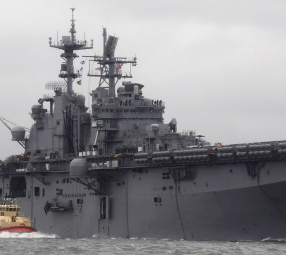
It’s four in the morning in the Baltic Sea. Somewhere, across the rolling waves far onshore, Russian compatriots in the Estonian border city of Narva seize the city hall, police headquarters, and the main telecommunication hubs. A U.S. Navy Littoral Combat Ship (LCS) conducting mine countermeasure training near Scotland with the Royal Navy is the most significant sea-based U.S. presence for miles. What can the Navy do?
This article explores the role of U.S. sea power in deterring and responding to irregular incidents in the Baltic region. Though the wider debate on Russian hybrid warfare has ebbed and flowed since Russia’s annexation of Crimea, discussing the role of sea power has been noticeably limited.
I will attempt to remedy this below, first by detailing some basic characteristics of unconventional scenarios, then by utilizing these characteristics to construct my own notional Baltic Sea crisis. This fictitious incident provides a sounding board against which we can investigate way in which the Navy does (and does not) have a dog in the Baltic fight. Read more
Source: www.nationalinterest.org

